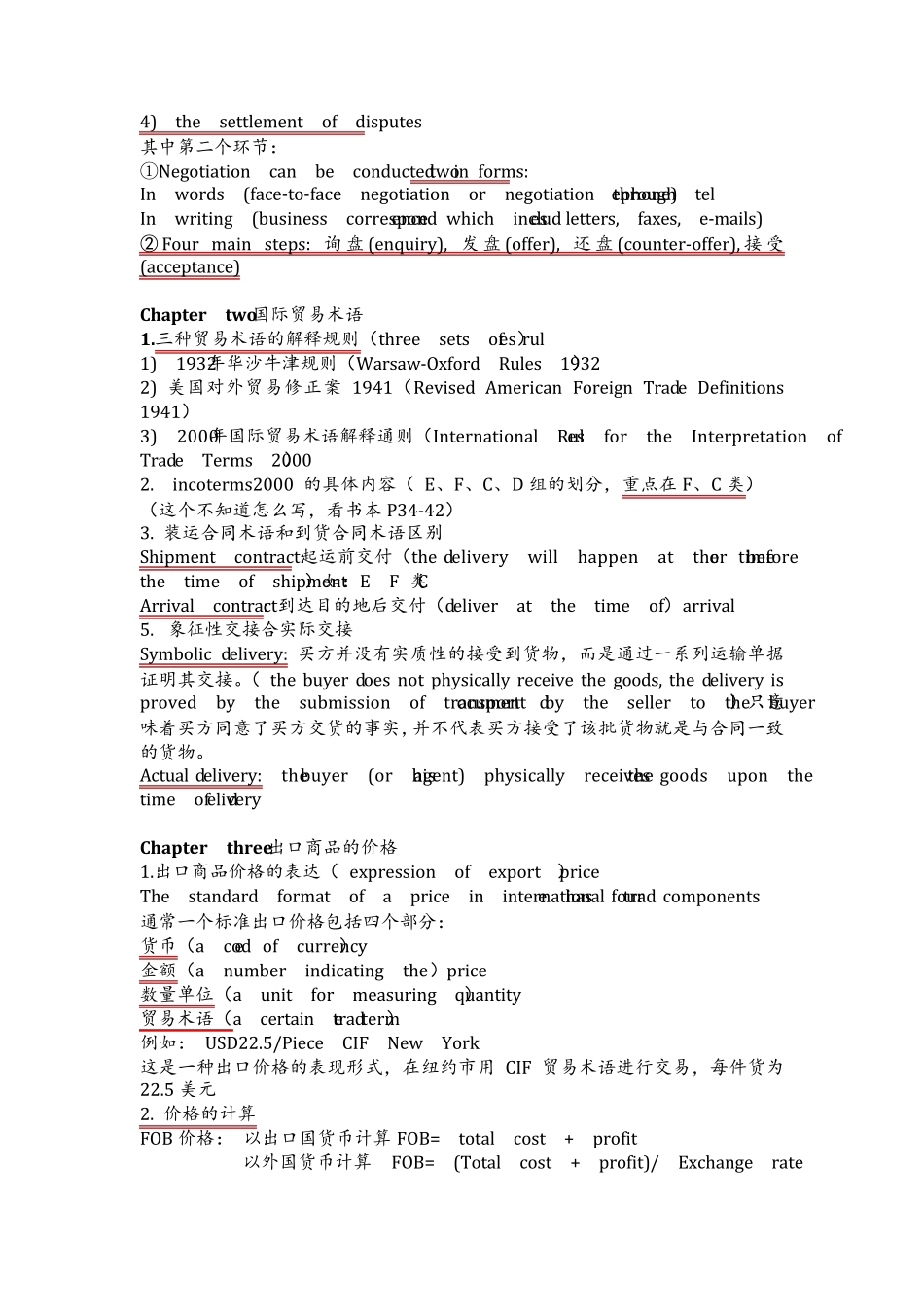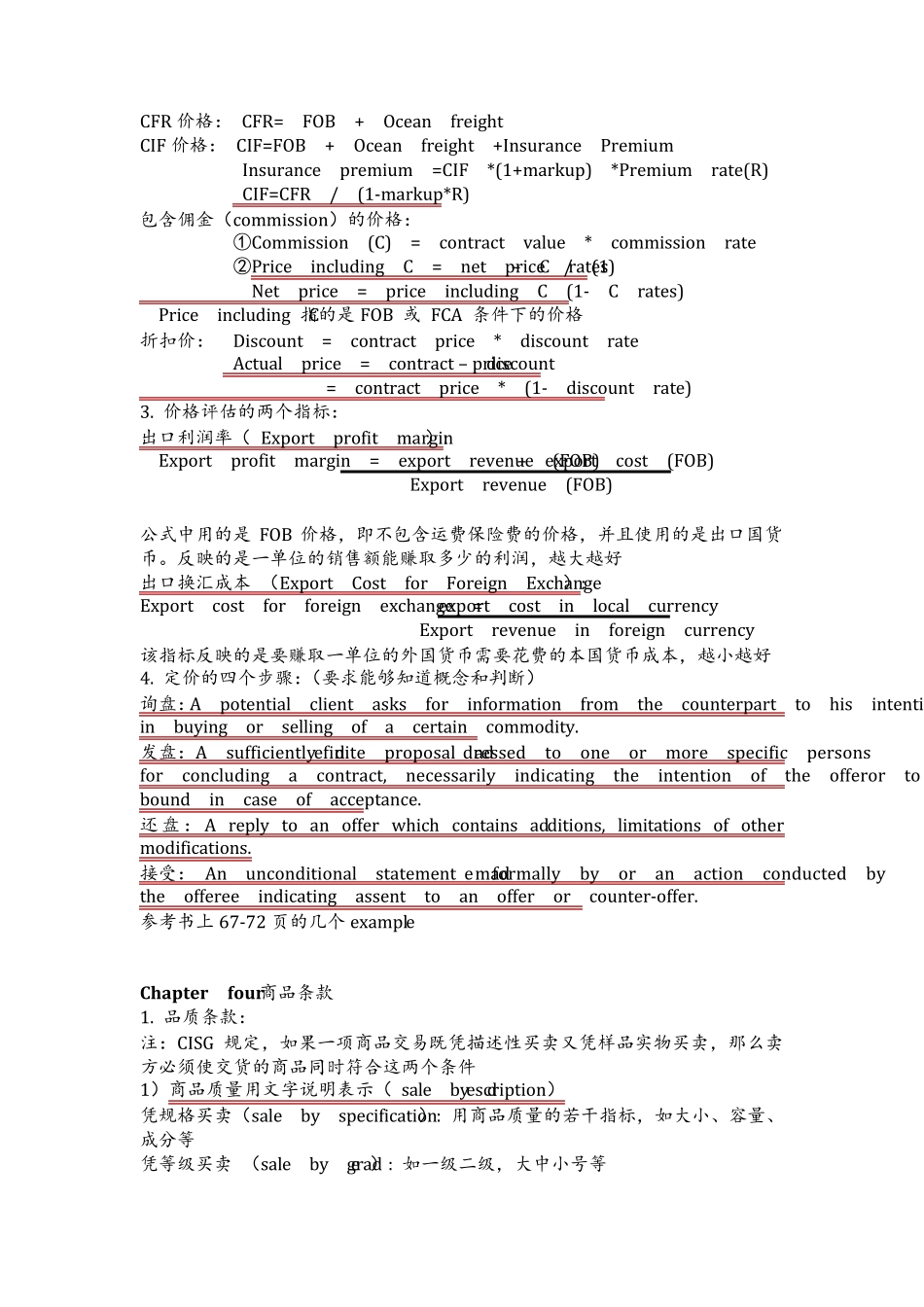国际贸易实务(下划线为重点记忆和理解,无的为一般记忆和了解) Chapter one 1. 国际贸易概念:International trade is also known as world trade, foreign trade, overseas trade. It refers to the process of fair and deliberate exchange of goods or services between two or more countries, involving the use of two or more currencies. Besides, international trade concerns trade operations of both import and export and includes the purchase and sale of both visible and invisible goods. 2. 国际贸易产生的原因:(了解) 1) Resource reasons (natural resource, human resource and technology) 2) Economic reasons (economic benefits, comparative advantage and economies of scale) 3) Other reasons (political reasons, differences in tastes, preferences and consumption patterns) 3. 国际贸易与国内贸易的不同: In particular, international trade is more subject to: 1) Language habits and cultural differences 2) Foreign laws, customs and regulations or international rules 3) Exchange rate fluctuations and interest rate 4) Higher level of political, financial and transportation risks 5) More complex business procedures therefore managers need a broader range of management skills 4. 国际贸易的分类: 1)从货物流向(direction of cargo flow)分: export trade, import trade and transit trade(过境贸易) 2)从参与的贸易方(the number of participants )分:direct trade, indirect trade and entrepot trade(转口贸易) 转口贸易:entrepot trade refers to the transaction which involves importing goods from overseas for further processing or assembling and the re-exporting the goods abroad. 转口贸易又称中转贸易或再输出贸易,是指国际贸易中进出口货物的买卖,不是在生产国和消费国之间直接进行,而是通过第三国转手进行的贸易。对于第三国来说,就是转口贸易,与过境贸易的最大区别在于货物的所有权会发生转移,并且只涉及一个贸易方。...


